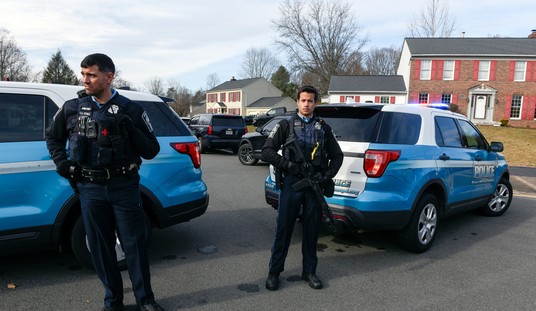On Thursday, Donald Trump held a Black History Month reception at the White House, and he mentioned some of the names of the people he wanted to add to the National Garden of American Heroes. When I wrote about that yesterday, several people asked me what exactly the National Garden of American Heroes was, and to be honest, I wasn't 100% sure myself, nor were many other media outlets based on my research.
As it turns out, Trump issued an executive order just before leaving office in 2021 called "Building the National Garden of American Heroes." His intention was to "establish a statuary park" to "reflect the awesome splendor of our country’s timeless exceptionalism." The park would be filled with statues of great Americans from throughout history, ranging from Ansel Adams to Lorenzo de Zavala, and including politicians, actors, musicians, athletes, inventors, businesspeople, writers, and civil rights icons.
Joe Biden, of course, nixed the idea when he took over during the most recent four dark years of American history, but it looks like Trump is ready to bring it back. At the Black History Month reception, Trump called out some of the names of black Americans who he plans to honor in the garden, like Rosa Parks, Billie Holiday, Jackie Robinson, and Kobe Bryant. But there was one name that wasn't quite as familiar to most people: Prince Estabrook.
Born sometime in the 1740s, Estabrook was enslaved by a man in Lexington, Mass., named Benjamin Estabrook. While his exact origins are unknown, it's believed that his parents were already enslaved by the Estabrook family and he was born during that time. It's also been said that there were not many slaves in Lexington and he most likely worked as a farmhand and was friendly with Benjamin, helping him with various business activities.
At the time, Massachusetts laws banned "Indians and Negroes" from training alongside local militias, but people belonging to these groups were told to show up for battle in the case of an emergency. Prince Estabrook took this seriously. When Paul Revere rode into Lexington on the way to Concord on April 18, 1775, to warn everyone that the British were coming, Captain John Parker called for the Lexington militia to assemble and prepare for battle. Prince also showed up, making him the first black soldier to fight in the American Revolution. Unfortunately, he was wounded when the British arrived.
From the National Park Service:
In 1775 Prince was a member of the Lexington militia, and mustered with that militia under the command of Colonel John Parker during the early morning hours of April 19th. When the advance column of British troops decided to confront the militia gathered on Lexington Green, Prince was among the militiamen who had reassembled there. During the ensuing shooting, before the British officers regained control of their troops, Prince Estabrook was struck by a musket ball in his left shoulder. A document entitled 'Appendix - Soldiers of Color on April 19, 1775' states that a 35 year old black slave from Lexington named Prince Estabrook serving in Colonel Parker’s militia was actively engaged in fighting and was wounded that day. A separate document titled 'LIST of the Names of the PROVINCIALS who were Killed and Wounded in the late Engagement with His Majesty’s Troops at Concord, &c.', under a heading listed as 'Wounded Of Lexington', the name 'Prince Easterbrooks (a Negro Man)' appears.
Thankfully, Prince recovered from his wounds and spent the next eight years serving "several tours with the militia and with the Continental Army." Upon returning to Lexington after the American Revolution, he earned his freedom. Some say it was a reward from Benjamin, while others say it was a legality following the Quock Walker case, which led to the Massachusetts Supreme Judicial Court abolishing slavery in 1783. Either way, Prince Estabrook was no longer a slave.
It's not clear what happened to Prince after that. Some say he married, though there are no records of him marrying or having children. During a 1790 census, a "non-white freeman" is recorded as living with Benjamin, so it's possible he remained with the family as a paid worker. He eventually moved to Ashby, Mass., with Benjamin's son, Nathan, and Nathan's wife, Sally.
We do know that Prince lived a long life. He died in 1830, putting him in his late eighties or earlier nineties. According to the National Park Service, he is buried at the First Unitarian Universalist Church of Ashby along with Nathan and Sally Estabrook. In 1930, the Brigadier General James Reed Chapter of the Sons of the American Revolution petitioned the U.S. War Department to honor him with a grave marker at the cemetery.
Most notable amongst the graves is that of Prince Estabrook (c. 1740 – 1830), a Black veteran who fought in the Battle of Lexington and Concord, during which he sustained a musket ball injury to his shoulder. pic.twitter.com/iozSsybEiI
— Mount Auburn Cemetery (@MountAuburnCem) November 9, 2020
In 2008, Prince was honored with a memorial near the historic Buckman Tavern site in Lexington. It reads:
Monument to Prince Estabrook, first African American to fight in the American Revolution—it’s good to know about you, thank you. #princeestabrook #lexingtonmassachusetts
— Lexington Historical Society (@LexHistSoc) August 12, 2019
Reposted from @Evalundsagerhttps://t.co/WfqDBsrRcm pic.twitter.com/BNNNQkeazV










